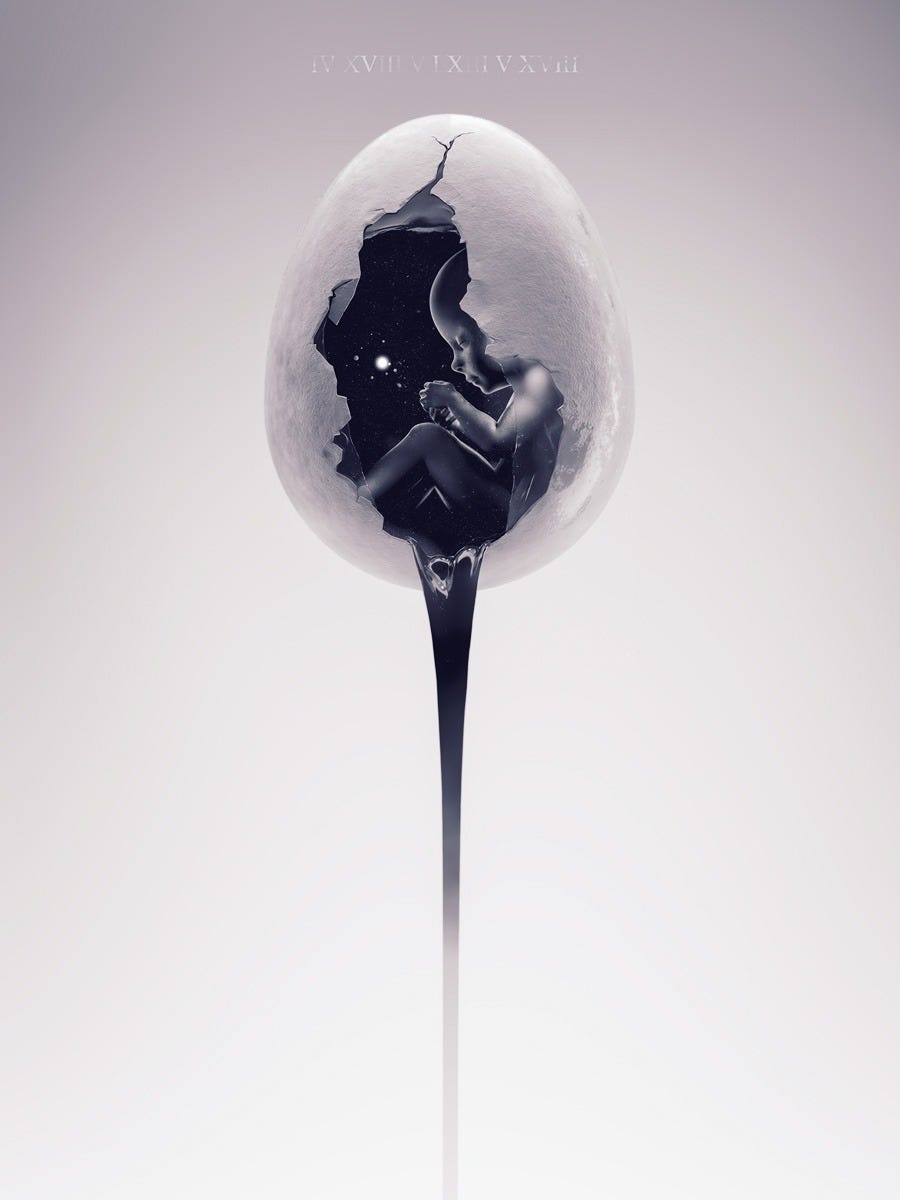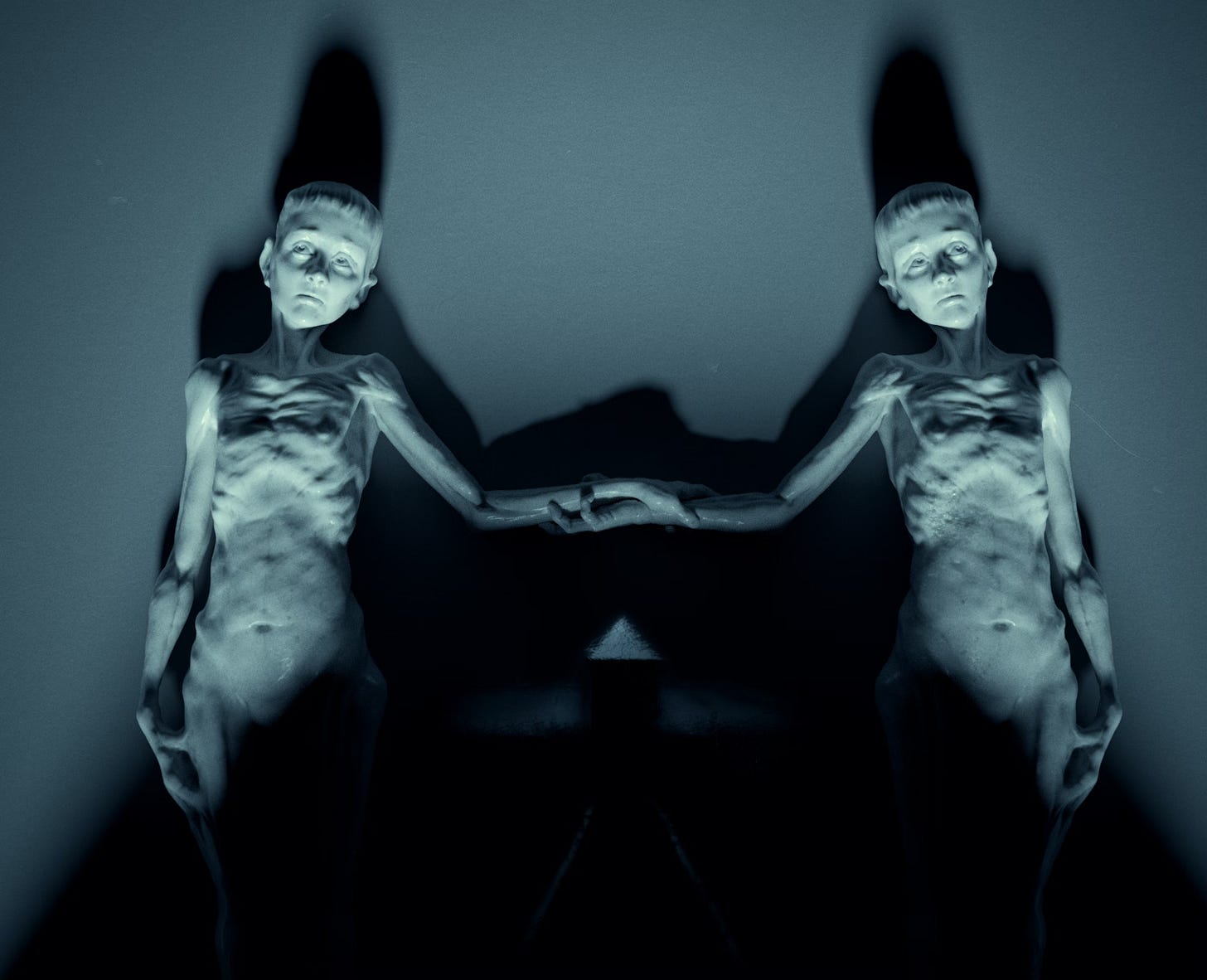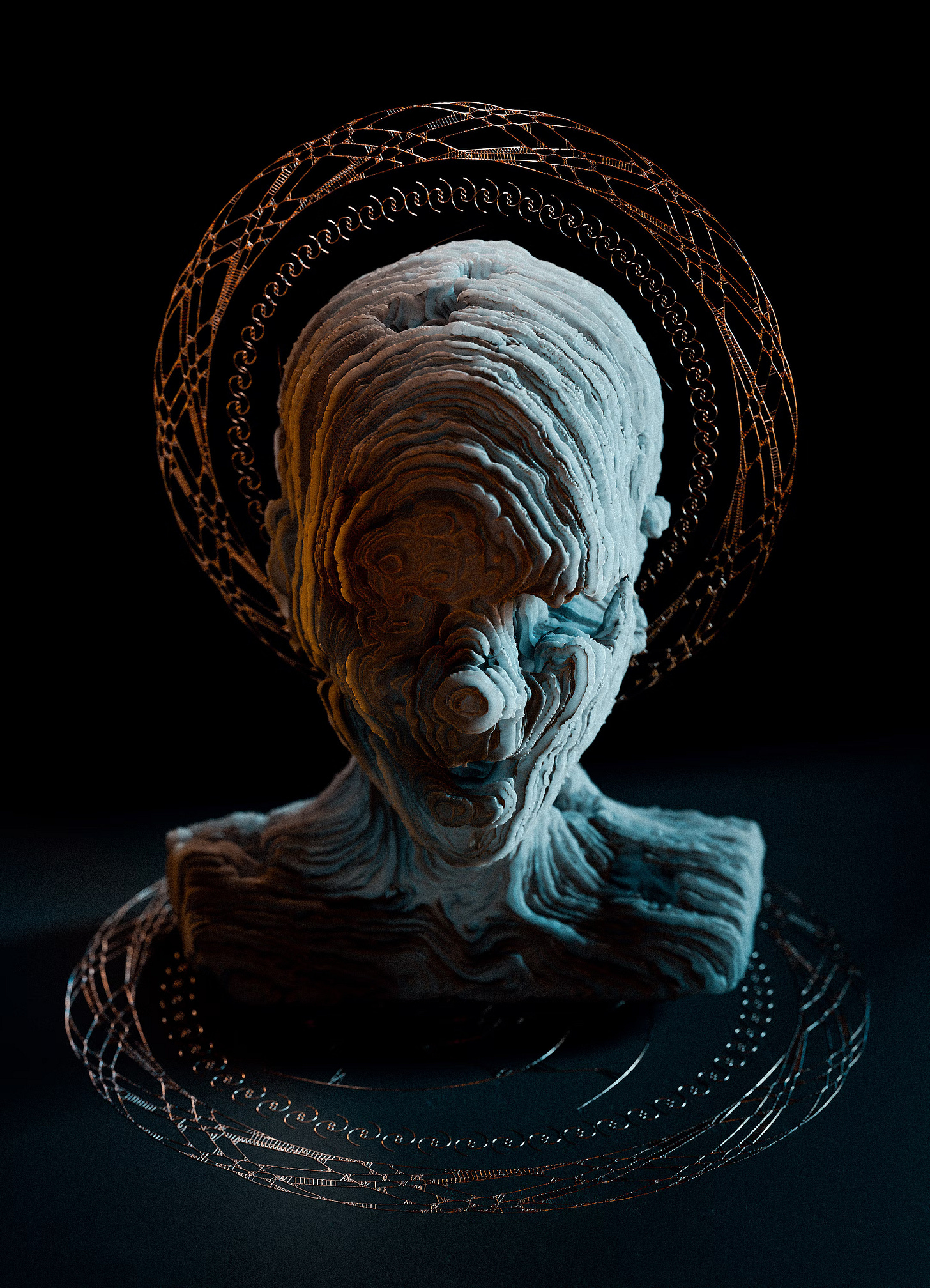Eyes of Lamia is part of the small group of folks that were there when I first started Transmissions from the Void, back in the weekly Twitter Spaces days. His art is dark and thoughtful, and it’s been amazing watching him consistently share these amazing works for the last year and a half since we first connected.
Stas is not your average digital artist, and I like that his work tends to fall in the darker realms of art. Some of it is very peaceful and some of it is very unnerving, but I find that all of it is thought provoking in a way that challenges your sense of context, and comprehension. It’s elegant and clean, but somehow also gritty and surreal.
Right from the beginning of our conversation, we barrel right into the question of living life as a creative. Early on, he encountered the challenges of being unable to pursue his own vision, and it took him some time to findhis style, and discover the trajectory with his work. His humility and honesty about his story and process is really relatable, but also very inspiring.
Having a background messing around with art at a younger age, he found some acknowledgement early on that motivated him to pursue making art, which I find is so important for many artists. In his case, his grandfather rewarded him for creating a scene with plasticine! Achievement unlocked: family patriarch approves of art!
Eventually he went to university for computer graphics/visualization & animation. While it was an art program, it had a technical lean with a focus in programming. Which is always fascinating to me because the majority of creatives are either left or right brain folks - so maybe this was the program’s way of filtering out who’s who. Who knows, I like to think that most of what we learn in college is about ourselves anyway.


As expected, I wanted to explore where the “darkness” in his work comes from, so we went back to the early days of his exposure to Marilyn Manson, and how much this dude scared him! Out of the discomfort he experienced discovering Manson’s creepyness, he later found himself appreciating it more and more. Goes to show that some folks aren’t afraid of exploring things that scare them. This is certainly a form of progress.
Digging a little deeper, Stas explains how there is a somewhat amorphous process in his mind, where there aren’t pin-pointed, specific inspirations or influences. Coupled with his product visualization background on a professional level, his interest in questioning things that matter to him, takes him away from subjects that are mere distractions, and produces the aesthetic we see in his work. It’s approachable visually, but the subject matter is anything but superficial.
Touching briefly on the attention spans of people nowadays, we skip over to the ethereality of the narratives in his work. I think this is appropriate, because Stas states that his art changes as he and the world around him changes. Artists really can be amazing conduits for human experience with their work, so that others can explore themes outside of their own heads.
As is appropriate in these situations, we break down where the pseudonym “Eyes of Lamia” comes from. The story behind it from Greek mythology is pretty fucking intense! Cliff notes: This woman is viewed as being a monster that eats children, who was actually put in that position by a cruel god. Read the whole thing here. The message: things are not always what they seem!
On brand with my general approach, I ask the question of identity vs persona, and what Stas is reflecting in his work, and what his intentions might be in regards to who he is. His answer is really great; he shares an anecdote in the form of his museum or art gallery going experience. He’s not always looking for what the intention behind an artist’s work is, and is more interested in whether it appeals to him on a personal level or not. Subsequently, all he cares about is whether people find something to connect with or not in art.
The pitfalls of trying to convey something in your brain accurately through visual art are real. People are going to see what they’re going to see. But I still find it important to try and see who the artist is by looking at their work, because intentionality matters to me as an artist. Stas’ point however, while outlining the value of “reading the captions,” does lay out the majority of what folks experience when looking at art: something personal.
Besides, sometimes knowing less about people is a good thing.
On the topic of approaching our art, Stas shares his thoughts on mental health, and how there is a time to create, and a time to stay away from the canvas. It raises the point that everybody has different ways of dealing with things, and how making art can be therapeutic for some, but not for others.
On the point of showing his art in physical spaces, Stas lays out the incredible impact NFTs have had for digital artists. Prior to this, it was not really a consideration. And this topic throws us into topic of societal disparity, and how the privilege we have being able to use technology to show our work sits in stark contrast with the poverty around it. The futuristic largescale digital billboard showing beautiful artwork, while a homeless person sits in desolation below it is a stark reminder of the type of world we currently live in. I find that coupled with this example he shares, Stas’s approach to art is one that is loaded with a very deeply humanitarian intention. Maybe that’s just my take on it; I think his work conveys both senses of sadness and hope, a balance that gives it a valuable narrative.
And ultimately, maybe the accessibility of physical art is very, very far from being obsolete, because so many people cannot access the digital world so easily. And even so, what do we want people to see in our work when they look at it? What are our intentions? Do we have some responsibility towards to explain a message that we believe can make the world a better place?
We are all products of our environments, and as artists, we have the power to offer windows into concepts and ideas that folks living in other environments have not considered before. Be sure to follow Stas’s journey on Twitter, and check out his offerings on both OBJKT and Foundation.
Next up, Everfresh! Sebastian is one of the most incredibly animators I have seen out there, and it’s been a pleasure being able to connect with him, and get to know him personally. You can also hear him every Tuesday on Hiena’s MOVEIT Twitter Spaces, which I co-host.




















Share this post